How to Clean Countertops
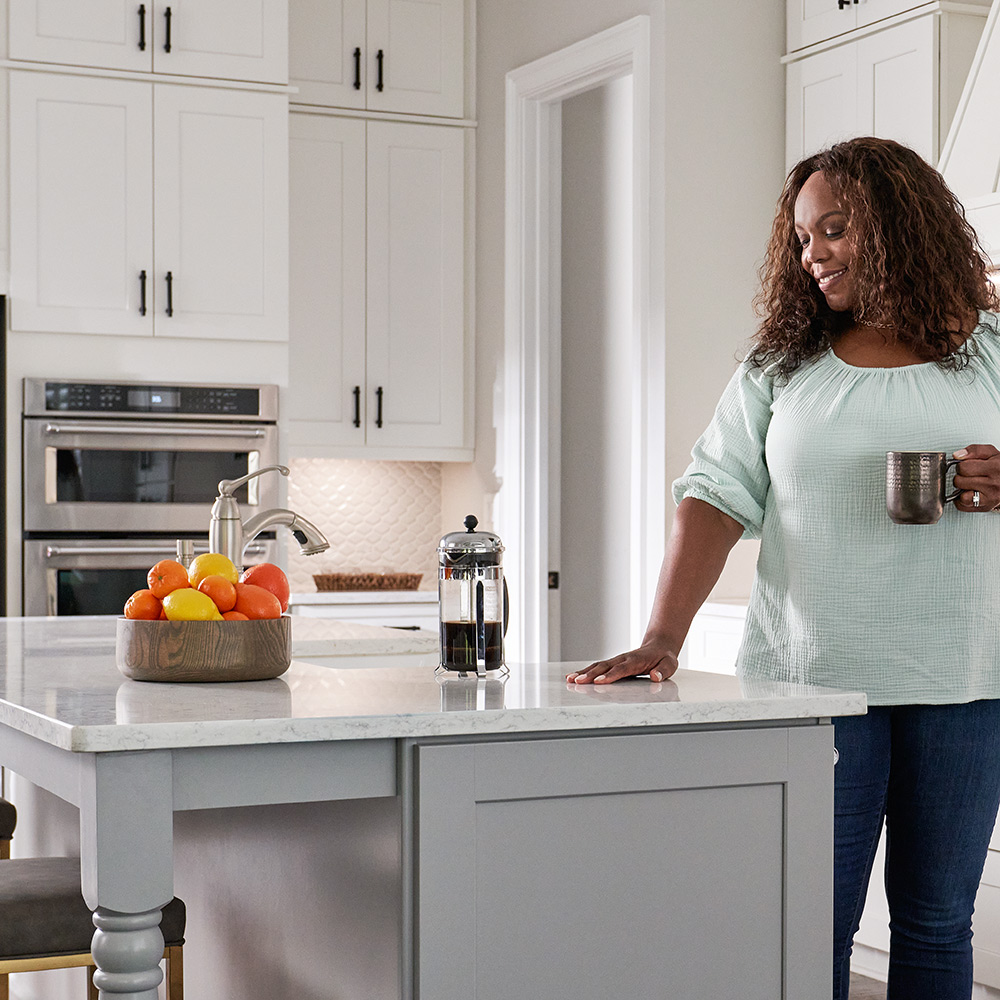
Published December 22, 2023
Kitchen and bathroom countertops are a focal point—and the most frequently used surface in your home. Keep them clean and well-maintained so that your home is neat and attractive, and your family is kept safe from germs. This guide highlights a few easy steps to clean your countertops and keep surfaces looking spotless. Plus, get tips on stain removal and regular maintenance.
Difficulty:
Beginner
Duration:
Under 2 hours
Table of Contents
Pre-Clean
Cleaning Different Countertop Surfaces
Laminate and Soapstone
Rinsing and Drying
Removing Stains on Wood
Removing Stains on Marble, Granite, Laminate and Stainless Steel
Pre-Clean
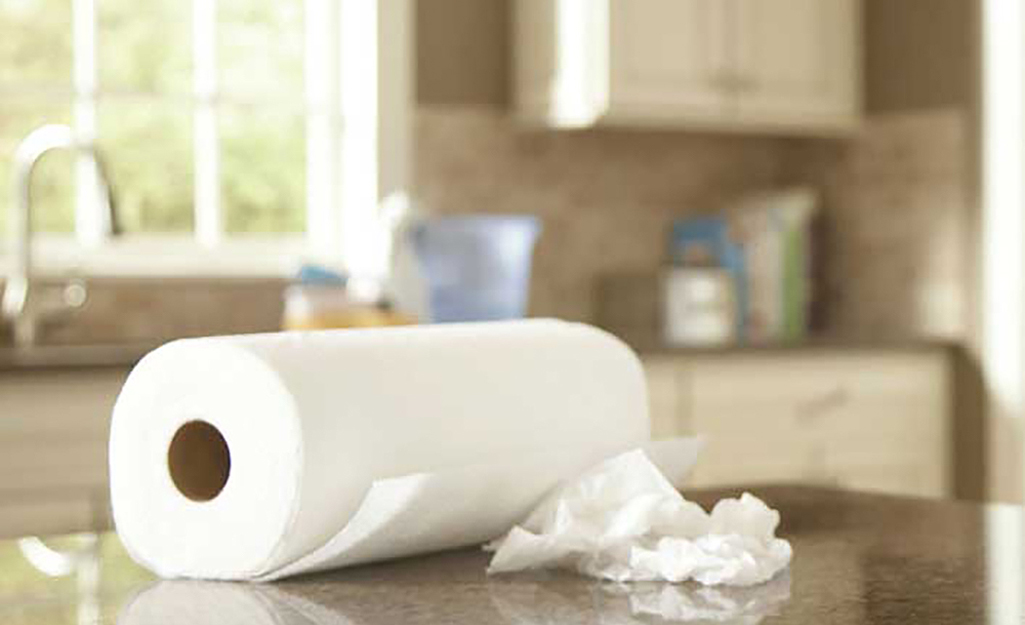
Remove dust and crumbs from your countertop for a deeper clean. Use a paper towel, cotton cloth or microfiber cloth to remove any visible dirt. Alternatively, reach for a counter brush to quickly sweep debris directly into the trash. Look for a brush designed specifically for your type of countertop material to prevent scratches.
Cleaning Different Countertop Surfaces
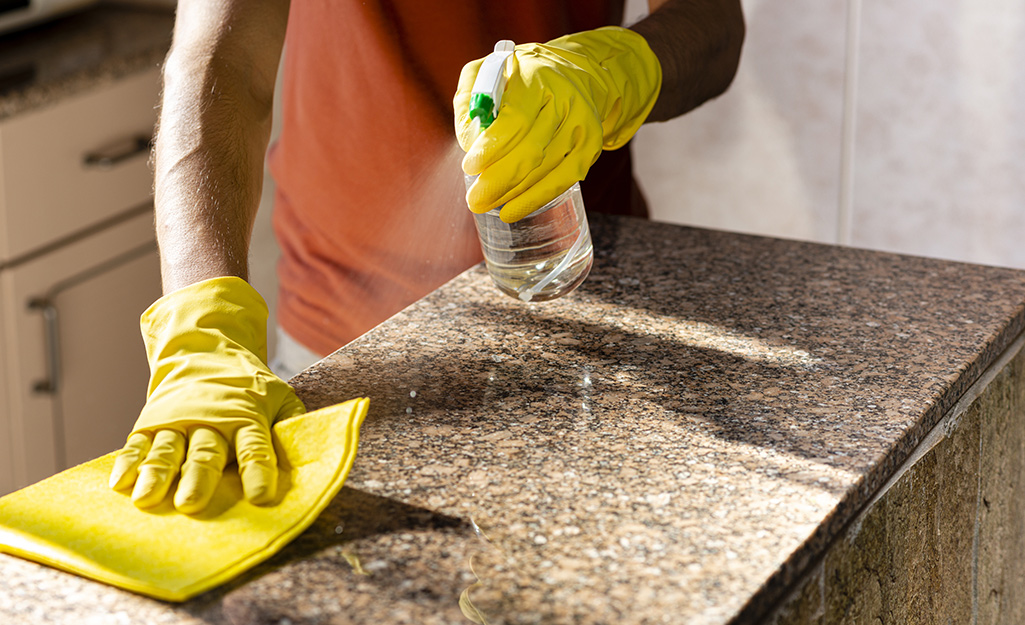
Wood, marble, granite, quartz, engineered wood and stainless steel require gentle cleaning to avoid damage. With its neutral pH, dish soap is right for the job.
- Moisten a microfiber or cotton cleaning cloth with warm water. Add a dime-sized amount of dish soap. Fold the cloth in your hand and rub it back and forth two or three times to encourage lathering.
- Wipe down the counter with large swipes of your hand. For large countertops, add more soap when you no longer see bubbles transferring to the surface.
Laminate and Soapstone
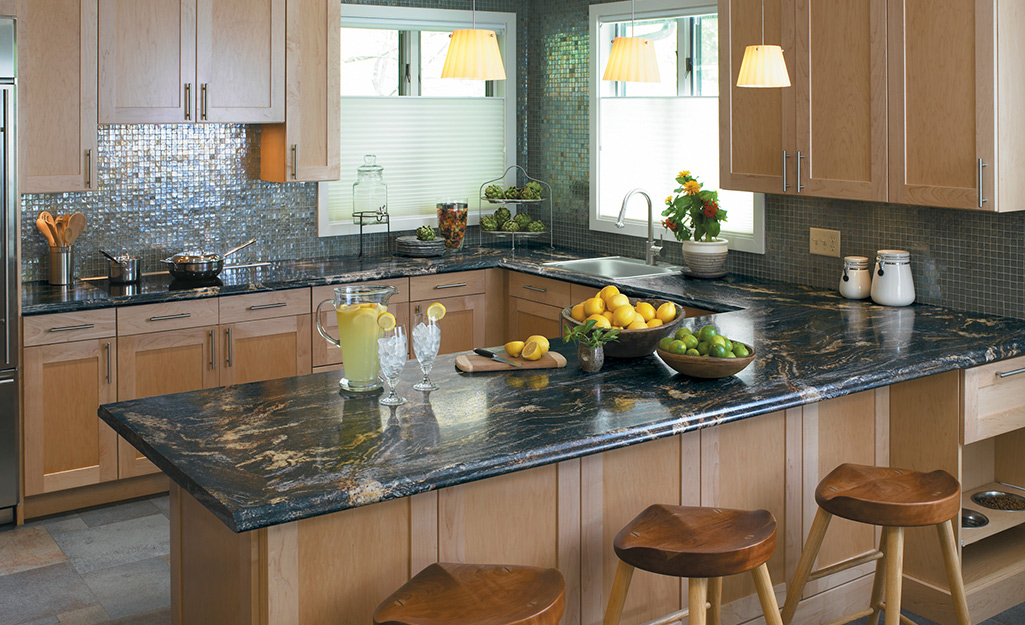
Laminate and soapstone countertops can withstand the effects of a slightly more powerful cleaner. For these, skip the dish soap and use a mild, multi-purpose cleaning agent approved for the specific type of material. Dampen a reusable cleaning cloth with the cleaner, and wipe down the countertops. If you notice that your cloth no longer moistens the countertop, apply more cleaner to the cloth.
Rinsing and Drying
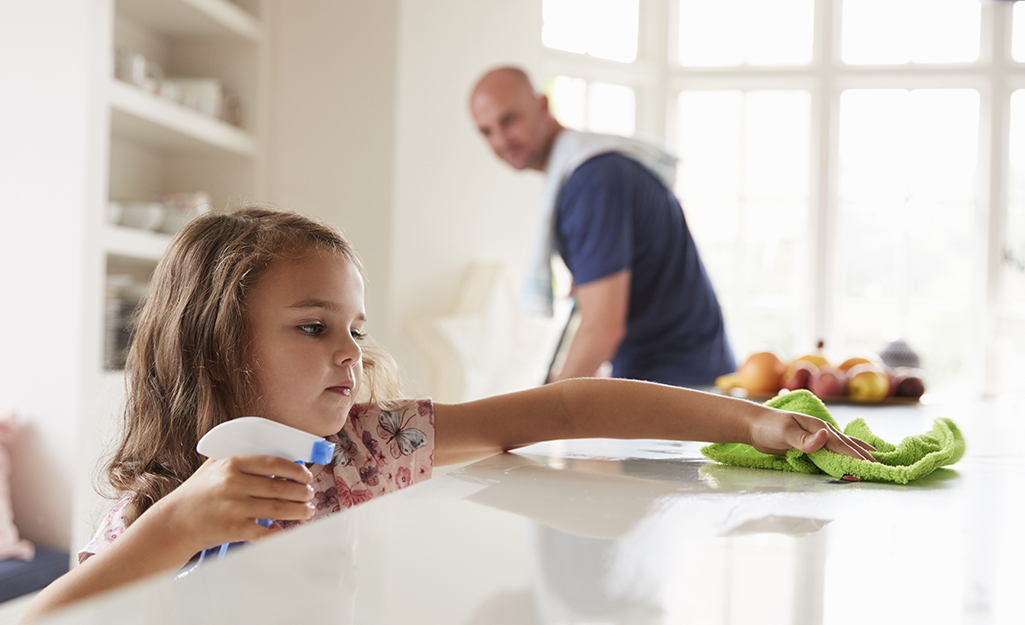
Even the recommended cleaning products for countertops could cause damage if they’re allowed to remain in place for very long. To protect the surface, rinse away the cleaner thoroughly after scrubbing. Use a fresh cleaning cloth dampened with warm water. Thoroughly wipe down the counters to remove cleaner residue. Rinse a second time if you can still see the cleaning product on the surface of the counter. When it’s rinsed, dry off the countertop using a soft, dry cloth.
Removing Stains on Wood
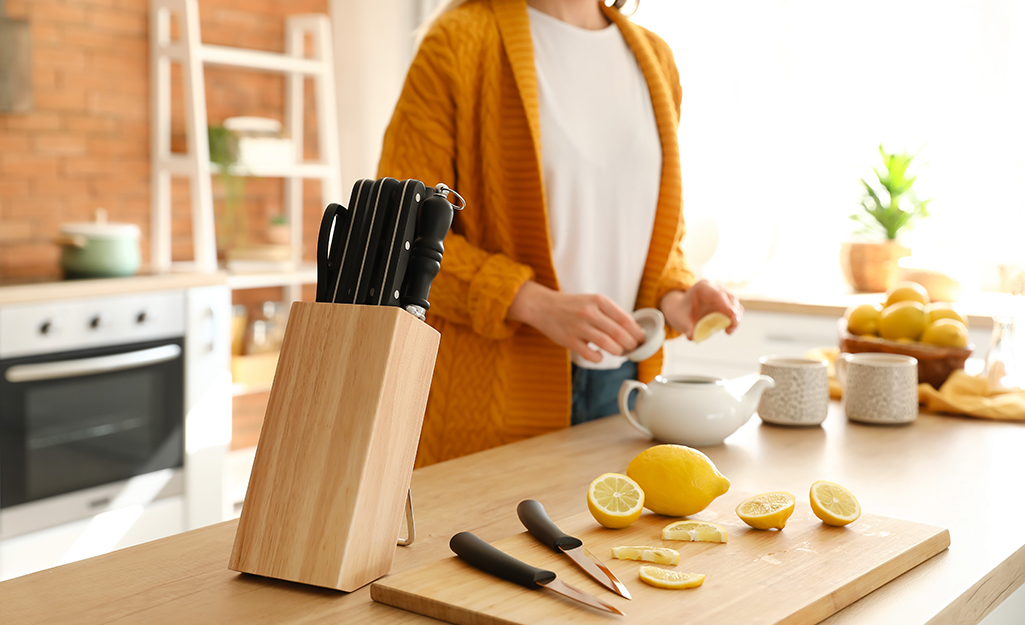
For stubborn stains on wood or butcher block countertops:
- Cover the stain with ordinary table salt.
- Halve a lemon using a sharp knife. Use the lemon half to rub the salt against the stain. Continue to rub until you see the stain begin to lift.
- Rinse off the salt and lemon solution with a soft cloth moistened with a solution of water and distilled white vinegar.
Removing Stains on Marble, Granite, Laminate and Stainless Steel
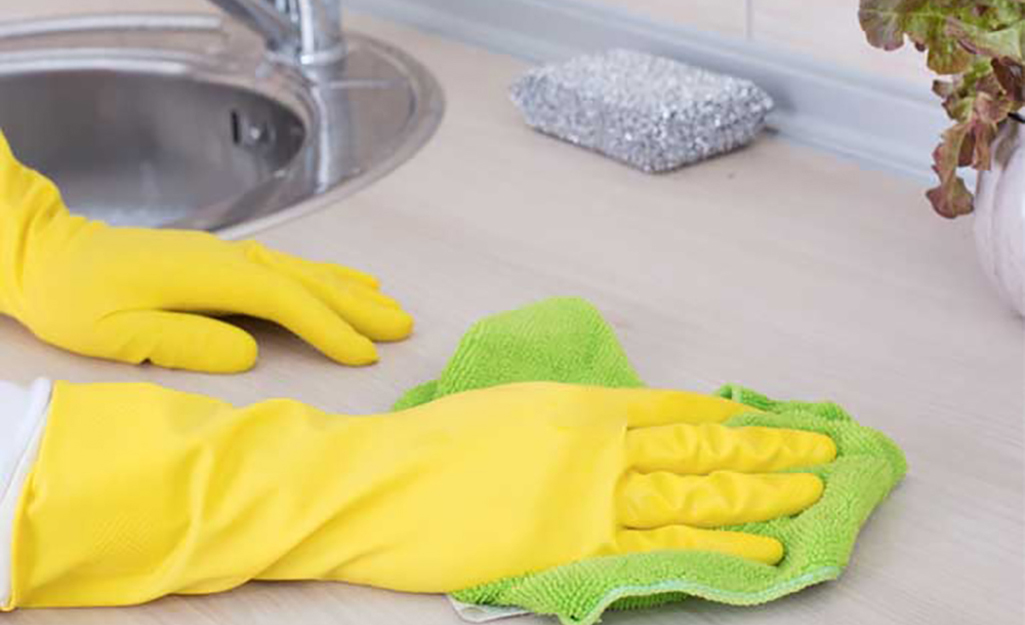
Here's how to treat stains on marble, granite, laminate or stainless steel countertops.
- Make a paste made of baking soda and warm water.
- Allow the paste to rest for 5 to 10 minutes, then scrub into the countertop stain very gently. Baking soda is abrasive, and hard or prolonged scrubbing may damage some materials.
- Rinse with warm water and a reusable cleaning cloth.
- For stubborn stains, prepare and apply the baking soda paste as described above. Cover the area with plastic wrap. Secure it in place with masking tape. Allow the paste to work overnight. In the morning, rinse with warm water and a reusable cleaning cloth.
Tip: For granite and marble countertops, baking soda paste is best for oil-based stains. For water-based stains, use hydrogen peroxide.
Removing Stains on Quartz and Engineered Stone
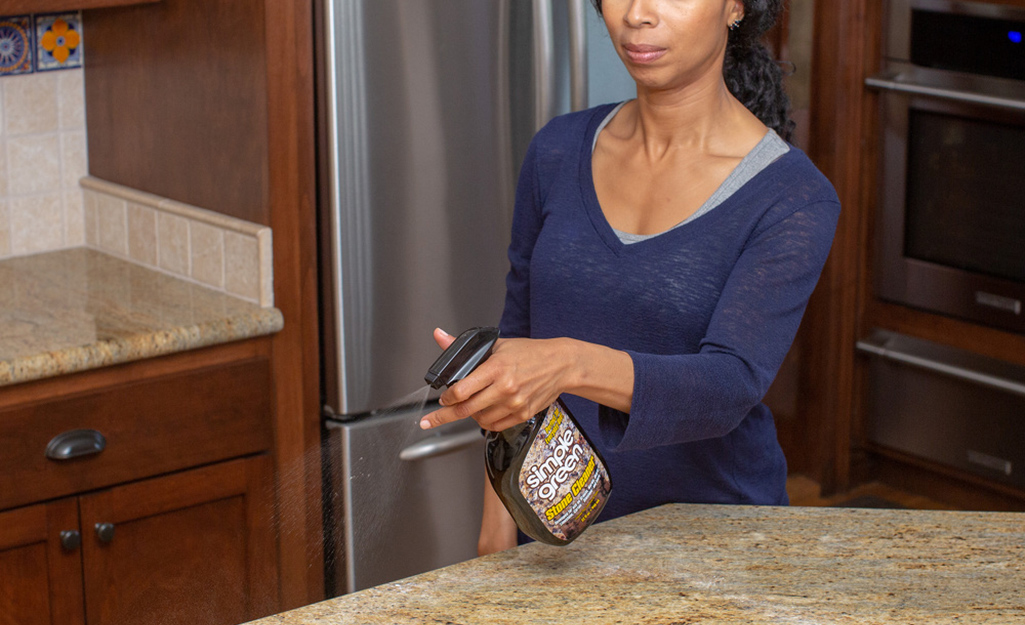
Quartz and engineered stone are highly stain-resistant. If discoloration lingers after rinsing, try wiping the countertop down with glass cleaner and a soft cloth.
Tip: Grout cleaner is best for removing stubborn stains in the grout between tiles and on visible countertop seams. Follow the directions for use to ensure best results.
Disinfecting Countertops
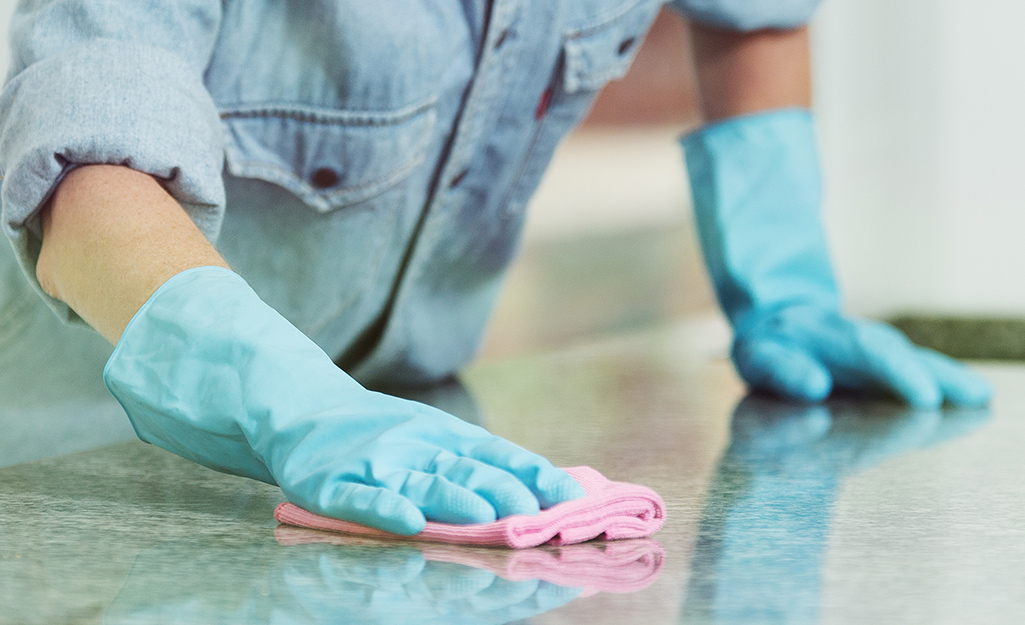
Cleaning lifts away some germs that pose a risk for household illnesses, but they may not eliminate all viruses, bacteria and microorganisms. Disinfecting is the process of killing potentially harmful microbes. Highly effective disinfectants may eliminate 99.9 percent of germs. The best way to disinfect varies based on countertop type:
- For granite, soapstone and wood, use bleach. Dilute household bleach with warm water according to the directions on the bleach. Wipe the countertops down with the solution using a reusable cleaning cloth. Rinse with warm water and a fresh cloth.
- Laminate, marble and stainless steel require using a disinfecting spray approved for the specific material. Follow the directions on the bottle. Avoid using bleach on these materials. It can cause discoloration.
- With engineered stone and quartz, use alcohol. Dilute isopropyl (rubbing) alcohol with water. Wipe the countertops down with the solution using a reusable cleaning cloth. Rinse with warm water and a fresh cloth.
Tip: Wear rubber gloves while disinfecting to protect your skin.
Sealing Countertops
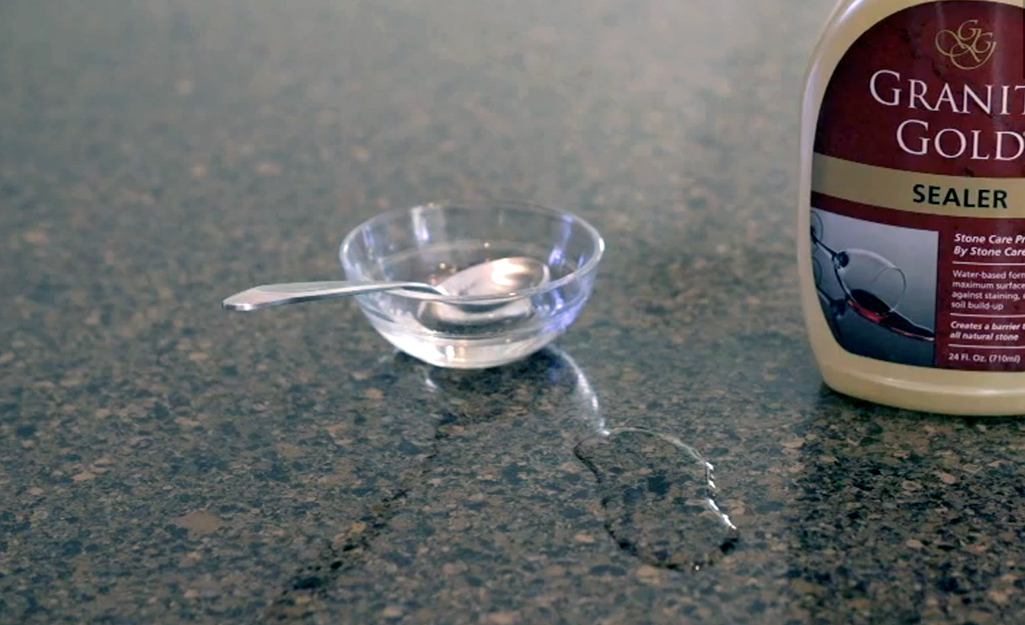
Sealing some types of countertops periodically helps them resist stains and scratches and look like new for longer. The best way to seal depends on the material:
- Seal wood countertops once every month for the first year after installation. After that, reseal every six months. Use a butcher block conditioner or oil to moisturize the wood. Before applying, use sandpaper to smooth away any noticeable scratches or dings.
- Test granite and marble countertops to determine when they are ready for a reseal. Sprinkle the counter with water. If the counter absorbs the moisture fully within 3 to 4 minutes, rub or spray it with a sealer formulated for the material. Follow the manufacturer's instructions for best results.
- Soapstone's color naturally darkens over time. You don't need to seal it, but you can slow down the oxidation process. Rub mineral oil into these countertops each month.
- Engineered stone, laminate and quartz don't need resealing to remain in good condition.
- Stainless steel doesn't require a sealant. However, polishing with lemon oil and a microfiber cleaning cloth regularly can minimize fingerprints and keep counters gleaming.
Maintenance Tips
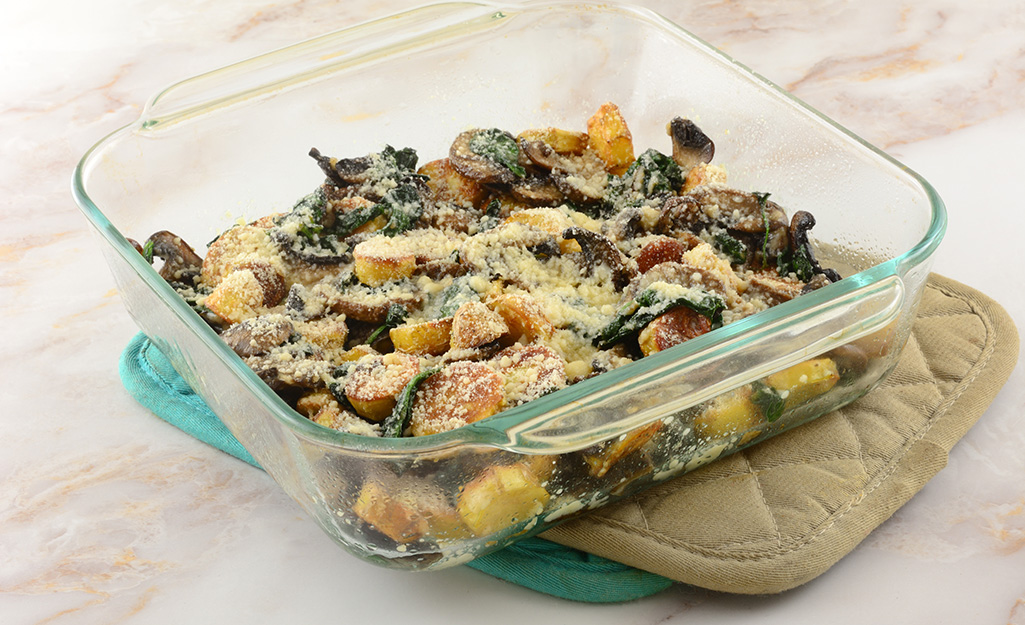
Extend the life of your countertops with these tips:
- Place a trivet or thick potholder under cookware and bakeware to avoid heat damage.
- Use a cutting board during food prep to protect countertops from scratches.
- Put dirty dishes containing foods that might stain in the sink rather than on the countertop. Examples include wine and sauces that contain tomatoes or bright spices like turmeric.
- Rest dirty cooking utensils on a spoon rest or plate rather than the countertop.
- Use coasters under glasses, mugs, bottles and cans to reduce the risk of water rings and temperature damage.
- Clean up spills as quickly as possible using a paper towel or absorbent cleaning cloth.
- Avoid sitting or standing on the countertop. Keep a step stool handy for accessing high cabinets in the bathroom and kitchen.
How to Un-Scorch a Countertop
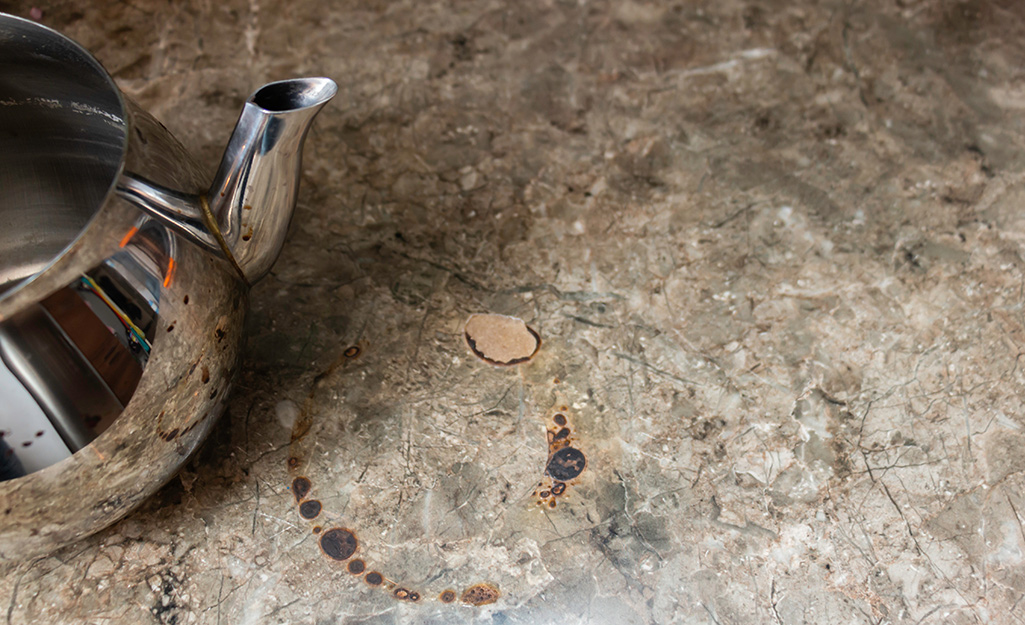
At times, there may be surface issues with a countertop that demand more than simple cleaning. There are a few ways to take care of light surface damage to a countertop.
Laminate Burn: Small burn marks on laminate countertops are simple to fix. Simply gather an an abrasive cleaner, like baking soda or toothpaste, a small brush, clean rags, 200-grit sandpaper and some clear Epoxy.
- Peel off any flaky bits if the laminate has bubbled.
- Clean out the burnt spot with an abrasive cleaner and a small brush.
- Next, sand the rough edges.
- Mix up the epoxy according to manufacturer's directions. Then, apply an even coat to the spot. Wait the required time for the epoxy to fully set.
- Now, sand the spot smooth.
Butcher Block Scratches: Butcher block counters can accumulate scratches and become dry over time. Apply butcher block oil or mineral oil every few weeks as a part of your regular maintenance. Periodically, however, you will need to sand and refinish the surface.
- Gather an electric sander and sheets of 80-, 150- and 220-grit sandpaper. You will also need a quality, food-safe butcher block oil.
- First, sand down the butcher block with 80-grit sandpaper, and then go over the surface again with 150-grit paper.
- Finish off with 220-grit sandpaper to remove any swirl marks from the previous sanding.
- Finally, apply the butcher block oil according to manufacturer's instructions. This will condition the wood and bring out its rich color.
Stains on Granite: Soap and oil are the most common stains for granite counters. These stains can be lifted with a stone poultice. Gather some stone poultice, plastic wrap, a toothpick, a plastic spoon, painter's tape and granite sealer.
- Spread some stone poultice over the stained area with the plastic spoon.
- Cover the poultice with plastic wrap, and use a toothpick to poke a few holes in the plastic. This will allow moisture to escape.
- Tape around the edge with painter's tape. Then, leave it to soak for 24 hours.
- Once the poultice has soaked up the stain overnight, scrape the excess up with the plastic spoon. Wipe the area clean.
- Apply a granite sealer to prevent future stains.
The best method for cleaning, disinfecting and sealing your kitchen countertops depends on the type of material. By using the tools and materials recommended for your countertops, you can keep them clean and looking their best through years of daily use. Now that you know how to clean countertops like the ones in your home, shop for everything you need to get the job done online, or use The Home Depot Mobile App to locate products and check inventory. We’ll take you to the exact aisle and bay.


























